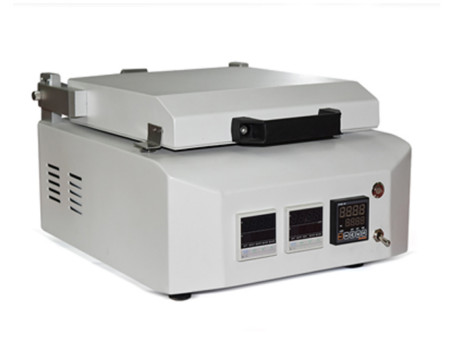GB/T 6152-1997 Tests for color fastness–Colour fastness to hot pressing ( Sublimation Test Standard)

The ironing sublimation color fastness tester is suitable for determining the color fastness performance of various colored textile materials and textiles to heat pressing, ironing and dry heat (sublimation), and can also detect the dimensional stability of fabrics during hot pressing and dry heat treatment.
Standard
GB/T 5718, GB/T 6152, JIS L0879, JIS L0850, ISO 105 P01, ISO 105 X11, AATCC 117, AATCC 133, AATCC 92(G247), AATCC 114(G247), M&S C13(G247B), M&S C10(G247B)

Technical Parameters
A, the hot plate for test: Size W100 × D40mm aluminum material (the same from top to bottom)
B, temperature regulation: digital temperature controller, the minimum display 1 ° C (upper and lower one)
C, the timing timer, audible alarm function
D, maximum temperature: 250 ° C
E, hot plate surface pressure: 4 ± 1 KPa (40cm2)
F, Heater: Cartridge Heaters 100V 150W (upper and lower one)
G, outside size: about W250 x D300 x H230mm
Sublimation fastness definition:
Sublimation fastness determines the color of various types of clothing materials, their high-temperature resistance, and their color retardant ability under heat pressure or heat drum process.
Methodology:
① Dry pressing: The dry specimen is subjected to a certain time in the pressure device with the specified temperature and the specified pressure. The Gray sample card evaluates the specimens color after testing.
② Tidal pressing: With a wet cotton-lined fabric covered, The dry specimen is subjected to a certain time in the pressure device with the specified temperature and the specified pressure. After the test, the gray sample card was used to evaluate the discoloration of the specimen and the stained color of the lining fabric.
③ Wet pressing: With a wet cotton-lined fabric covered, The wet specimen is subjected to a certain time in the pressure device with the specified temperature and the specified pressure. After the test, the gray sample card was used to evaluate the discoloration of the specimen and the stained color of the lining fabric.
Sublimation fastness testing procedure
Sample preparation: The sample size is 40mm×100mm. The size of the accompanying fabric is the same as the sample. The specimen should be put in the standard atmosphere,which is humidity (65±2)% and temperature (20±2)℃.
Test procedure:
Turn on the power.
Switch the button to ironing or sublimation. The lamp of ironing or the lamp of sublimation flashes which means the heater starts heating.
Set the test temperature. The pressure of the temperature depends on the type of fiber, the material of clothing, or the structure of the clothing. For instance, the recommended temperature of the blended fiber should be compatible with the least heat-resistant fiber.
Set time in accordance with the test requirement. Commonly, the specimen would be put under pressure and a specified temperature for 15s.
When the temperature reaches the test requirements, open the heating box and put it into the sample. If it is dry pressing, the specimen, which does not need to be accompanied by the lining fabric, can be heated directly. If it is moisture pressing, the specimen and the lining fabric are soaked. Whether the lower plate of the heating device is heated or not, it should always be covered with asbestos sheets, wool flannel, and dry, dyed cotton.
Put down the heating plate, make the sample under the pressure of 4kPa, and press the Start button immediately, when the timer begins to slack. After 15s, lift the heating plate.
Take out the specimen and immediately use the corresponding Grey sample card to evaluate the color change of the specimen.
Results
To evaluate the discoloration of the specimen by gray sample card 250, and then put the specimen in the standard atmosphere. After 4h, make the evaluation again.
To evaluate the staining of the lining fabric by gray sample card 251. Use the heavier staining side of the cotton-lined fabrics to evaluate.
Shanghai Qianshi Precision Electromechanical Technology Co., Ltd. was established in 2012. It focuses on the research, development, design, and production of textile testing instruments, and provides textile testing instruments and services for academic research units and testing institutions. Shanghai Qianshi is currently one of the most competitive and R&D-capable textile testing instrument manufacturers in China. The R&D team is composed of a group of experienced engineers. We are committed to serving customers wholeheartedly and striving to promote technological innovation in textile testing instruments.
2024-12-31 10:13

